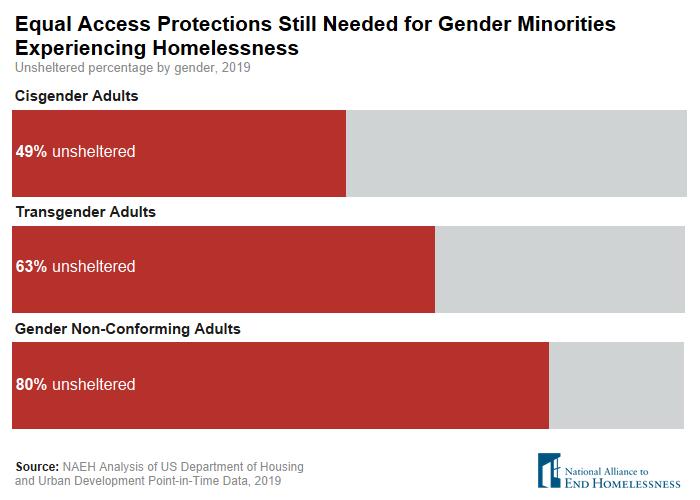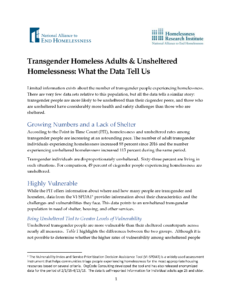Point-in-Time Counts over the past few years have revealed a staggering trend: transgender and gender non-conforming individuals experience homelessness at higher rates — unsheltered homelessness in particular. Recent data for these populations exposes these stark disparities.
Interactive Data
Explore data on homelessness among transgender and gender non-conforming individuals in your state or Continuum of Care.
Infographic
Since 2017, the number of transgender individuals experiencing homelessness has increased 57%, while the number of gender non-conforming individuals has increased 80%.
HUD’s Equal Access Rule
The 2016 Equal Access Rule, updated from its 2012 iteration, was very explicit in its mandate that access to shelter and housing must conform with, and adhere to, an individual’s self expressed gender identity. It builds upon HUD’s 2012 “Equal Access to Housing in HUD Programs Regardless of Sexual Orientation or Gender Identity” rule, which concluded that further research was needed on how best to accommodate transgender and gender non-conforming people when there are shared sleeping quarters or bathing facilities.
Past threats to the 2016 Equal Access Rule would have permitted discrimination of trans and gender non-conforming individuals.
Read more about what changes to HUD’s Equal Access Rule may have meant >>>
See also: Changes to HUD’s Equal Access Rule Could Exclude More Transgender People From Shelter



